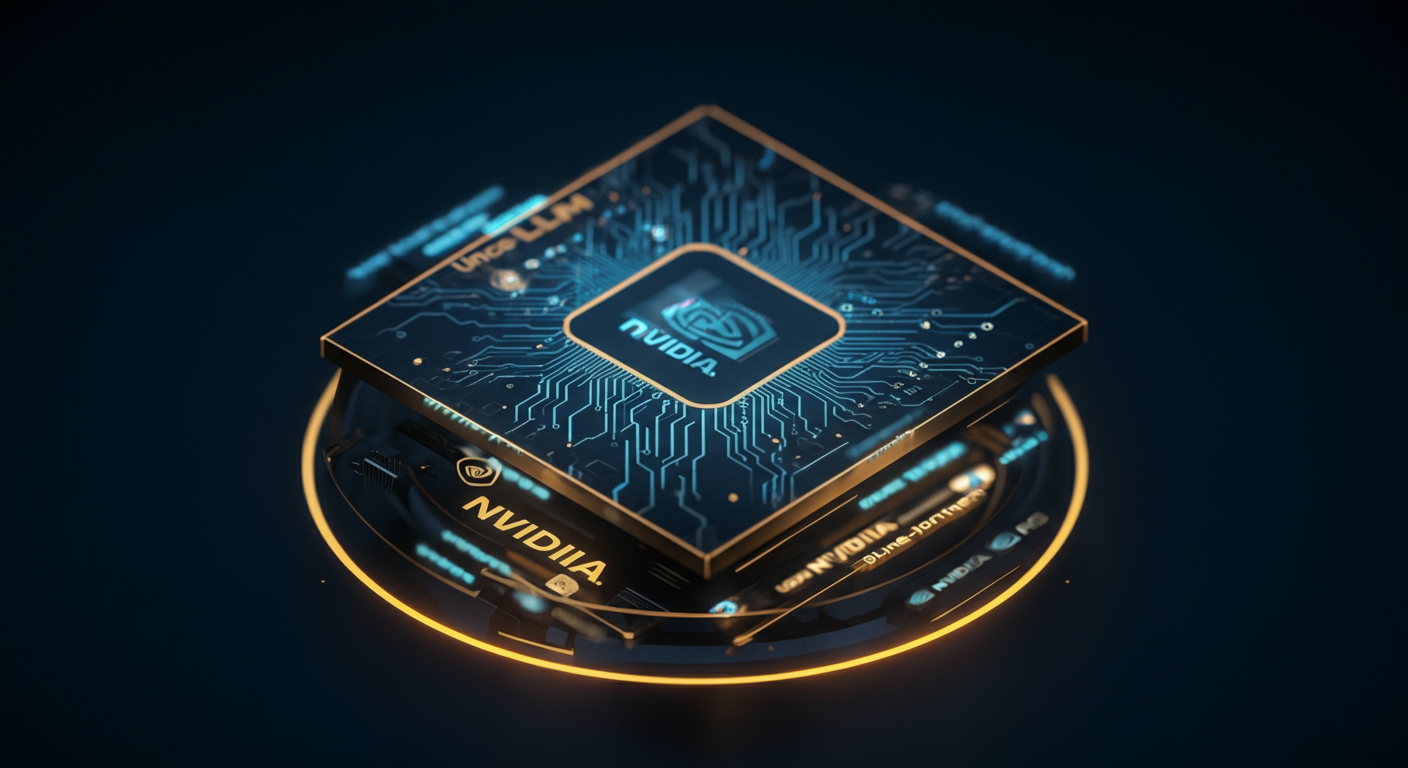Ling 2.0: Unveiling Ant Group's Reasoning-First AI Model – Architecture, Capabilities, and Impact

Here's an introduction to Ant Group's Ling 2.0, the company's next-generation AI model, and how it aims to revolutionize the way we think about language AI.
Introduction to Ling 2.0: The Reasoning Revolution
Ant Group, a major player in the fintech space, is making waves with its AI research, and Guide to Finding the Best AI Tool Directory can help you find other top AI innovators. Their latest creation, Ling 2.0, is built around a core principle: each activation within the model should demonstrably enhance its reasoning capabilities.
The Reasoning-First Philosophy
Ling 2.0 pioneers a 'reasoning-first' approach, a significant shift in language model design.
- Traditional models often focus on pattern recognition and statistical relationships.
- Ling 2.0 prioritizes building a robust reasoning engine at its core.
Impact Across Industries
The potential impact of this Ant Group AI Model is vast. We could see more sophisticated applications in:
- Finance: For fraud detection and risk assessment.
- Healthcare: Improving diagnostic accuracy.
- Customer Service: Creating AI assistants that can truly understand and resolve complex issues.
Ling 2.0 vs. The Competition
While models like ChatGPT and LaMDA have impressive capabilities, Ling 2.0 aims to differentiate itself through its emphasis on verifiable reasoning. By prioritizing reasoning, Reasoning-First AI development might sidestep common problems like AI "hallucinations".
This Ling 2.0 Introduction is just the beginning; only time will reveal the full potential of this new approach.
Ling 2.0's Architecture: A Deep Dive into the Mixture-of-Experts (MoE) Design.
Ling 2.0, the groundbreaking AI model from Ant Group, leverages a Mixture-of-Experts (MoE) architecture to achieve enhanced reasoning capabilities, a crucial element to building next-gen AI agents.
Understanding the Mixture-of-Experts (MoE)
The MoE architecture isn't your run-of-the-mill neural network; think of it as a team of specialized AI "experts." Instead of one monolithic network, MoE consists of:
- Multiple "Expert" Networks: These are smaller neural networks, each trained to handle specific types of data or tasks.
- A "Gating" Network: This network acts as the team lead, routing each incoming data sample to the most appropriate expert(s) to process it.
- Activation Mechanism: Determines which experts are relevant to a particular input.
Ling 2.0's Implementation
Specific details of Ling 2.0's MoE implementation are proprietary, but here's what we can infer:
- Likely uses a sparse MoE, where only a few experts are activated per input, increasing efficiency.
- Sophisticated routing mechanisms likely guide the gating network, crucial for complex reasoning tasks.
- A high number of parameters can be used in this kind of model.
Technical Challenges
Designing and training MoE models presents unique challenges:
- Load Balancing: Ensuring each expert receives a balanced workload to prevent under- or over-training.
- Expert Specialization: Guiding the experts to specialize in distinct areas without overlap.
- Communication Overhead: Managing the communication between the gating network and the experts.
Ling 2.0 vs. Other MoE Models

While details are scarce, Ling 2.0 likely shares similarities with models like Switch Transformer, which pioneered efficient MoE implementations. However, Ant Group’s specific focus on reasoning may have led to unique architectural choices and training methodologies.
In summary, Ling 2.0's use of MoE architecture is a bold step, reflecting a growing trend towards reasoning-first AI design. As AI models become increasingly sophisticated, understanding the intricacies of architectures like MoE will be crucial for unlocking their full potential.
One of the key selling points of next-generation AI is its ability to reason, going beyond simple pattern recognition.
How Does Ling 2.0 Reason?
Ling 2.0, developed by Ant Group, showcases specific reasoning skills:
- Logical Inference: It can draw conclusions from given information, like figuring out the next step in a sequence.
- Problem-Solving: Ling 2.0 attempts to find solutions to complex problems using logical deduction.
- Common Sense Reasoning: The model aims to understand implied meanings, cultural context, and unstated knowledge.
Benchmarking Reasoning Prowess
Ling 2.0's reasoning performance has been quantified on standard AI Reasoning benchmarks:
- ARC (AI2 Reasoning Challenge): Measures understanding of scientific concepts.
- HellaSwag: Tests common-sense inference.
Ling 2.0 vs. The Competition
While specific benchmark numbers are essential, it's equally important to see how Ling 2.0 stacks up against giants such as ChatGPT and others. A side-by-side comparison will help understand if Ling 2.0 delivers a genuine leap in AI reasoning, versus incremental improvement.Limitations and Future Directions
Despite progress, Ling 2.0 still has limitations:- Edge Cases: Struggles with novel situations or problems requiring highly specialized knowledge.
- Bias: Like other LLMs, may exhibit biases present in its training data.
Ling 2.0's advanced reasoning capabilities promise to reshape industries and processes far beyond simple automation.
Finance: Detecting Fraud and Optimizing Decisions
Ling 2.0 could revolutionize fraud detection by analyzing complex transaction patterns with its reasoning-first approach. It could also:- Enhance risk assessment for loans and investments
- Automate regulatory compliance processes
- Provide more accurate financial forecasting.
Healthcare: Personalizing Medicine and Improving Diagnostics
The model has the potential to analyze patient data, including medical history, genetic information, and lifestyle factors, to provide personalized treatment plans.- Assisting in medical diagnosis with more nuanced analysis of symptoms
- Accelerate drug discovery by identifying potential drug candidates and predicting their efficacy
- Help create AI powered personalized experiences for patients.
Education: Tailoring Learning Experiences
Ling 2.0 could power adaptive learning platforms that adjust to each student’s individual pace and learning style. Specific use cases could include:- Creating personalized learning paths
- Providing intelligent tutoring and feedback
- Automating assessment and grading processes
Ethical Considerations
The deployment of Ling 2.0 in sensitive applications such as healthcare and finance brings ethical considerations. It's essential to establish guidelines to ensure fairness, transparency, and accountability in its decision-making processes.Ling 2.0's impact hinges on responsible development and deployment, but its potential to transform decision-making is undeniable. We'll continue monitoring its progress and real-world applications to keep you informed. Next, we'll compare Ling 2.0 with other leading AI models to see how it stacks up.
The quest for truly intelligent AI relentlessly pushes the boundaries of reasoning capabilities.
Defining Reasoning in AI
Reasoning in AI goes beyond pattern recognition; it requires understanding context, drawing inferences, and making decisions based on incomplete information – mirroring human cognition. This shift signifies a move from reactive AI to proactive AI capable of anticipating and solving complex problems.For example, instead of just identifying objects in an image, a reasoning-enabled AI could explain the relationships between those objects and predict future events.
Ling 2.0's Contribution
Ant Group's Ling 2.0 contributes to this evolution by prioritizing reasoning in its architecture. Its innovative design focuses on enabling the model to:- Understand complex relationships
- Extract deeper meaning from data
- Apply learned knowledge to new situations
Challenges and Opportunities
While Ling 2.0 marks progress, building even more powerful reasoning-based AI models presents significant challenges, including:- The need for vast and diverse datasets
- The complexity of training algorithms
- Addressing potential biases in reasoning processes
Long-Term Societal Impact

Reasoning-first AI has the potential to reshape society by automating complex decision-making processes and creating more intuitive human-computer interactions. The Future of AI hinges on responsible development and ethical considerations to ensure equitable access and prevent misuse.
Ling 2.0's emphasis on reasoning reflects a broader trend toward AI that can truly understand and interact with the world, and further research will be essential in maximizing the benefits and mitigating the risks of these groundbreaking models.
Ling 2.0 isn't just another AI model; it's a reasoning engine, and getting started involves understanding how to integrate it into your workflow.
Accessing Ling 2.0
Unfortunately, there's no public information available on direct access to Ling 2.0. Keep an eye on Ant Group's official announcements for potential API access or open-source releases. If available, consider these options:- API Access: If Ant Group provides an API, developers can integrate Ling 2.0's capabilities into their applications programmatically.
- Open-Source Release: An open-source release would allow developers and researchers to explore the model's architecture, fine-tune it for specific tasks, and contribute to its development. For comparison, review the landscape of Open-Source AI
Resources for Developers and Researchers
Without official documentation, experimentation is key:- Monitor Official Channels: Follow Ant Group's research publications and tech blogs for insights into Ling 2.0's architecture and capabilities.
- Community Forums: Check platforms like GitHub, Reddit, and other AI-focused communities for discussions and potential community-driven resources.
Community Engagement
Given its novelty, a community around Ling 2.0 is likely nascent. Be proactive:- Start a Discussion: If you begin experimenting with Ling 2.0 (via available research), share your findings and insights on relevant platforms to foster a community.
- Contribute to Open-Source Projects: If the model, or related tools, become open-source, consider contributing to the project.
Licensing and Usage Restrictions
Always pay close attention to licensing terms. Here’s why it matters:Licensing dictates how you can use the model – commercially, academically, or personally. Restrictions might apply to data usage, redistribution, or modification.
Tips and Best Practices
While specific best practices for Ling 2.0 are unknown, general AI model usage tips still apply:- Understand the Model's Strengths: Focus on reasoning-heavy tasks where Ling 2.0 is expected to excel.
- Iterative Experimentation: Test different prompts and input formats to understand how the model responds.
Ling 2.0's reasoning-first approach could redefine AI, bringing us closer to genuinely intelligent systems.
Key Features and Benefits
- Reasoning-First Design: Ling 2.0 prioritizes reasoning, enabling it to tackle complex problems more effectively. This is a major departure from models that primarily focus on pattern recognition. Think of it like this: instead of just memorizing answers, it learns how to solve problems, similar to how we humans approach challenges.
- Improved Performance: By focusing on reasoning, Ling 2.0 could demonstrate superior performance in various tasks, from language understanding to decision-making.
- Versatile Applications: Imagine the impact across industries:
- > Enhanced decision-making in finance
- > More accurate diagnoses in healthcare
- > Smarter automation in manufacturing
The Reasoning Revolution
The emphasis on a reasoning-first approach is more than just a technical detail; it’s a paradigm shift. It’s about moving beyond AI that simply reacts to data and towards AI that truly understands and reasons about the world. To learn more about similar shifts, consider reading Command A Reasoning: The Definitive Guide to Next-Gen AI Problem Solving.The Future is Bright (and Intelligent)
Models like Ling 2.0 represent a significant stride towards Artificial General Intelligence (AGI). While we are not quite there yet, the development of reasoning-first AI models offers a tantalizing glimpse into a future where AI systems can tackle problems with human-like intelligence and adaptability.Explore Ling 2.0 and other innovative AI tools, and consider how you can contribute to this exciting journey!
Keywords
Ling 2.0, Ant Group AI, Reasoning-First AI, Mixture of Experts, MoE Architecture, AI Reasoning, AI Applications, AI Use Cases, Artificial Intelligence, Natural Language Processing, AI Model, Large Language Model, AI Development, AI Research, Future of AI
Hashtags
#AI #ArtificialIntelligence #MachineLearning #NLP #Ling2.0
Recommended AI tools
ChatGPT
Conversational AI
AI research, productivity, and conversation—smarter thinking, deeper insights.
Sora
Video Generation
Create stunning, realistic videos and audio from text, images, or video—remix and collaborate with Sora, OpenAI’s advanced generative video app.
Google Gemini
Conversational AI
Your everyday Google AI assistant for creativity, research, and productivity
Perplexity
Search & Discovery
Clear answers from reliable sources, powered by AI.
DeepSeek
Conversational AI
Efficient open-weight AI models for advanced reasoning and research
Freepik AI Image Generator
Image Generation
Generate on-brand AI images from text, sketches, or photos—fast, realistic, and ready for commercial use.
About the Author

Written by
Dr. William Bobos
Dr. William Bobos (known as 'Dr. Bob') is a long-time AI expert focused on practical evaluations of AI tools and frameworks. He frequently tests new releases, reads academic papers, and tracks industry news to translate breakthroughs into real-world use. At Best AI Tools, he curates clear, actionable insights for builders, researchers, and decision-makers.
More from Dr.
